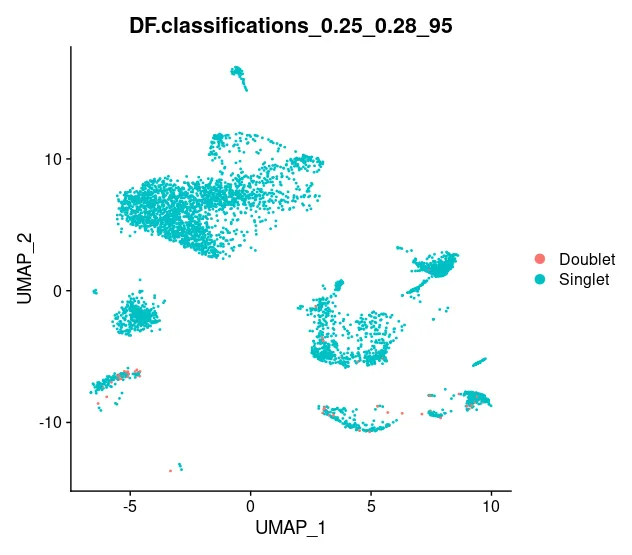文章目录
- 一【题目类别】
- 二【题目难度】
- 三【题目编号】
- 四【题目描述】
- 五【题目示例】
- 六【题目提示】
- 七【解题思路】
- 八【时间频度】
- 九【代码实现】
- 十【提交结果】
一【题目类别】
二【题目难度】
- 中等
三【题目编号】
四【题目描述】
- 给你一个整数数组
nums,请你将该数组升序排列。
五【题目示例】
-
示例 1:
- 输入:nums = [5,2,3,1]
- 输出:[1,2,3,5]
-
示例 2:
- 输入:nums = [5,1,1,2,0,0]
- 输出:[0,0,1,1,2,5]
六【题目提示】
- 1 < = n u m s . l e n g t h < = 5 ∗ 1 0 4 1 <= nums.length <= 5 * 10^4 1<=nums.length<=5∗104
- − 5 ∗ 1 0 4 < = n u m s [ i ] < = 5 ∗ 1 0 4 -5 * 10^4 <= nums[i] <= 5 * 10^4 −5∗104<=nums[i]<=5∗104
七【解题思路】
八【时间频度】
- 时间复杂度: O ( n l o g n ) O(nlogn) O(nlogn), n n n为传入的参数大小
- 空间复杂度: O ( n ) O(n) O(n), n n n为传入的参数大小
九【代码实现】
- Java语言版
class Solution {public int[] sortArray(int[] nums) {// 初始化小顶堆int[] heap = new int[nums.length + 1];int[] heapSize = {0};// 使用小顶堆排序数组for (int i = 0; i < nums.length; i++) {push(heap, heapSize, nums[i]);}int[] res = new int[nums.length];for (int i = 0; i < nums.length; i++) {res[i] = top(heap);pop(heap, heapSize);}// 返回结果return res;}// 交换数据public void swap(int[] heap, int a, int b) {int temp = heap[a];heap[a] = heap[b];heap[b] = temp;}// 向小顶堆中插入元素public void push(int[] heap, int[] heapSize, int x) {heap[++heapSize[0]] = x;for (int i = heapSize[0]; i > 1 && heap[i] < heap[i >> 1]; i >>= 1) {swap(heap, i, i >> 1);}}// 弹出小顶堆的堆顶元素public void pop(int[] heap, int[] heapSize) {heap[1] = heap[heapSize[0]--];int temp = heap[1];int i = 1;int j = 2;while (j <= heapSize[0]) {if (j != heapSize[0] && heap[j + 1] < heap[j]) {j++;}if (heap[j] < temp) {heap[i] = heap[j];i = j;j = i << 1;}else{break;}}heap[i] = temp;}// 返回小顶堆的堆顶元素值public int top(int[] heap) {return heap[1];}}
- Python语言版
class Solution:def sortArray(self, nums: List[int]) -> List[int]:# 初始化小顶堆heap = [0]heap_size = [0]# 使用小顶堆排序数组for num in nums:self.push(heap, heap_size, num)res = []for _ in range(len(nums)):res.append(self.top(heap))self.pop(heap, heap_size)# 返回结果return resdef swap(self, heap, a, b):"""交换数据"""heap[a], heap[b] = heap[b], heap[a]def push(self, heap, heap_size, x):"""向小顶堆中插入元素"""heap.append(x)heap_size[0] += 1i = heap_size[0]while i > 1 and heap[i] < heap[i >> 1]:self.swap(heap, i, i >> 1)i >>= 1def pop(self, heap, heap_size):"""弹出小顶堆的堆顶元素"""heap[1] = heap[heap_size[0]]heap_size[0] -= 1temp = heap[1]i = 1j = 2while j <= heap_size[0]:if j != heap_size[0] and heap[j + 1] < heap[j]:j += 1if heap[j] < temp:heap[i] = heap[j]i = jj = i << 1else:breakheap[i] = tempdef top(self, heap):"""返回小顶堆的堆顶元素值"""return heap[1]
- C语言版
/*** Note: The returned array must be malloced, assume caller calls free().*/// 交换数据
void swap(int *a, int *b)
{int temp = *a;*a = *b;*b = temp;
}// 向小顶堆中插入元素
void push(int *heap, int *heapSize, int x)
{heap[++(*heapSize)] = x;for (int i = (*heapSize); i > 1 && heap[i] < heap[i >> 1]; i >>= 1){swap(&heap[i], &heap[i >> 1]);}
}// 弹出小顶堆的堆顶元素
void pop(int *heap, int *heapSize)
{heap[1] = heap[(*heapSize)--];int temp = heap[1];int i = 1;int j = 2;while (j <= (*heapSize)){if (j != (*heapSize) && heap[j + 1] < heap[j]){j++;}if (heap[j] < temp){heap[i] = heap[j];i = j;j = i << 1;}else{break;}}heap[i] = temp;
}// 返回小顶堆的堆顶元素值
int top(int *heap)
{return heap[1];
}int* sortArray(int* nums, int numsSize, int* returnSize)
{// 初始化小顶堆int* heap = (int*)malloc(sizeof(int) * (numsSize + 1));int heapSize = 0;// 使用小顶堆排序数组for (int i = 0; i < numsSize; i++){push(heap, &heapSize, nums[i]);}int* res = (int*)malloc(sizeof(int) * numsSize);for (int i = 0; i < numsSize; i++){res[i] = top(heap);pop(heap, &heapSize);}// 返回结果*returnSize = numsSize;free(heap);return res;
}
十【提交结果】
-
Java语言版

-
Python语言版

-
C语言版





